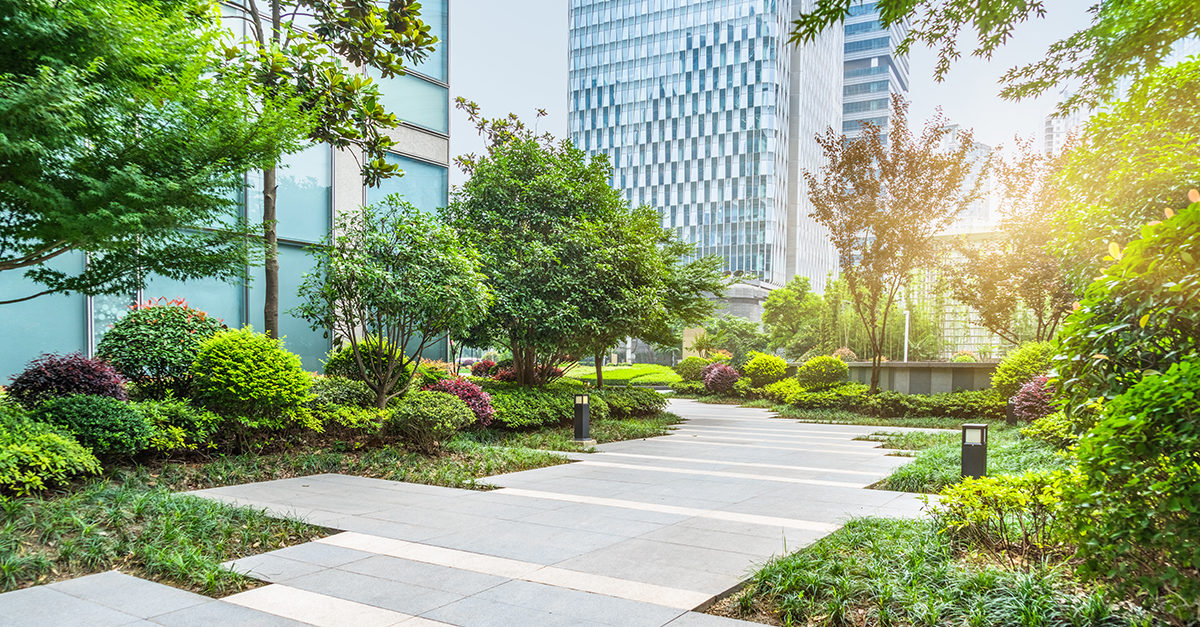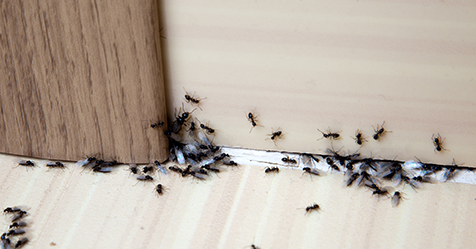A building’s landscape is one of the first parts of the property a patron, client, or potential employee may see when visiting. First impressions mean a lot, so a well-maintained landscape can help to frame a positive one.
“Good landscaping certainly provides curb appeal, which is important for leasing and tenant retention,” says Jim McCutcheon, CEO of HighGrove Partners, LLC, a Georgia-based commercial landscaping company. “One mistake managers make is not looking at landscaping as an asset that requires additional investment from time to time.”
Traditionally, a well-maintained facility landscape consisted of meticulously pruned bushes; decorative trees; a clean parking lot; and a lush, green, freshly-mowed lawn. However, in recent years, the school of thought for modern landscaping and beautification has shifted to make the outdoors more employee- and environmentally-friendly and healthy.
Some companies are including walk and bike paths to meet the growing demands of more health-conscious employees, according to McCutcheon. “Large suburban office parks [are] already embracing this trend now, with more urban revitalization incorporating outdoor spaces and connecting locations with large sidewalks and bike paths,” he says. “This also corresponds with the growing trend of more people using devices to track their steps and movement. Tenants are putting pressure on the commercial market to create these spaces in order to keep their occupancy rates high.”
However, not all facilities have the budget for these types of changes. With that in mind, here are some cost-effective tips for improving your facilities’ outdoor spaces to meet building occupants’ current needs.
Keep it Simple
Making improvements to the outdoors doesn’t have to fully consume a facility manager’s time or budget. A few inexpensive outdoor items is an easy place to start to make the outdoors more inviting, according to Ray Demes, the director of sales for City Wide Maintenance, a Kansas City-based building service contractor. “[Start with] picnic benches, add heating areas, or a bike rack. Those little things have a low entry fee but have a big return.”
Enlist Employee Help
Facility employees can be an important resource when researching how to improve the outdoor environment, according to Rob Ellis, vice president of City Wide Maintenance. They not only can help come up with new ideas, but may also help out in the improvement process. “We have a lot of locations where employees will volunteer and help build an outdoor structure as a team-building experience,” he says.
Consider Your Environment
Planting flowers, trees, and shrubbery native to the area is a simple and cost-effective method for facilities. “One of the best sustainable options in design is to incorporate more of the native plant material from an area,” McCutcheon says. “It is better suited to the climate and soils, so water usage is not as high as it is for material imported from other zones of the country.”
Cut Water Usage
Believe it or not, it is possible to reduce water waste by making smart landscaping decisions. “You don’t need to spend six figures,” says Demes, who suggests working around the natural environment. One way to do this is to create a path with stone slabs instead of by laying asphalt or concrete.
Adjust Expectations
New priorities may require a level of commitment and creativity. While adding more community areas or sustainable landscaping practices to your facility’s outdoor space may seem like a stretch, these tips can help your facility stay within budget and achieve the desired level of appearance.



